History
 As I was looking through my Uncle Bill Spencer’s family history account, I can across a Princess named, Joan of Acre. I wondered if this was a mistake on my uncle’s part or within some of the research that was out there, I wondered if they had indeed meant Joan of Arc. Joan of Arc, however, was a completely different person. The name was close enough that I thought maybe it was an error, but it wasn’t. Joan of Arc was born in 1412, and died on May 30, 1431, while Joan of Acre was born on April 1272 and died on April 23, 1307. Joan of Acre was an English princess, a daughter of King Edward I of England and Queen Eleanor of Castile. The name “Acre” comes from her birthplace in the Holy Land while her parents were on a crusade. Joan had sixteen full siblings, only five of which survived to adulthood, and at least three half siblings.
As I was looking through my Uncle Bill Spencer’s family history account, I can across a Princess named, Joan of Acre. I wondered if this was a mistake on my uncle’s part or within some of the research that was out there, I wondered if they had indeed meant Joan of Arc. Joan of Arc, however, was a completely different person. The name was close enough that I thought maybe it was an error, but it wasn’t. Joan of Arc was born in 1412, and died on May 30, 1431, while Joan of Acre was born on April 1272 and died on April 23, 1307. Joan of Acre was an English princess, a daughter of King Edward I of England and Queen Eleanor of Castile. The name “Acre” comes from her birthplace in the Holy Land while her parents were on a crusade. Joan had sixteen full siblings, only five of which survived to adulthood, and at least three half siblings.
The Princess was married twice. Her first husband was Gilbert de Clare who was the 7th Earl of Gloucester, was one of the most powerful nobles in her father’s kingdom. They married on April 30, 1290, and their short marriage produced four children…Gilbert de Clare, Eleanor de Clare, Margaret de Clare, Elizabeth de Clare. He passed away just about five years after their marriage, leaving her to raise the young children…a totally different thing than these days, given her stature and all the help she would have had. Her second husband was Sir Ralph de Monthermer who a squire in her household. She married him in secret in 1297, probably due to the fact that he would not have been a suitable match in those days…sad to think about really. I never could understand the whole purpose behind stature or other arranged marriages, but times were different, and I can’t say that our current divorce rate speaks well for making our own choices either. The marriage didn’t remain a secret for long however, because they had four children as well…Mary de Monthermer, 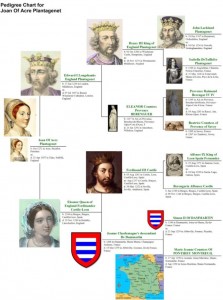 Joan de Monthermer, Thomas de Monthermer, Edward de Monthermer. After the marriage, her father, who was not happy about the marriage, nevertheless, gave in and her husband was given the same titles that her first husband had held.
Joan de Monthermer, Thomas de Monthermer, Edward de Monthermer. After the marriage, her father, who was not happy about the marriage, nevertheless, gave in and her husband was given the same titles that her first husband had held.
History does not record the cause of Joan’s death on April 23, 1307, but many suspect that it was in childbirth. She was best known for her rebellious second marriage, as it was pretty much an unheard of event at that time. Joan’s father died just four months after she did, Joan’s widower, Ralph de Monthermer, lost the title of Earl of Gloucester soon after the deaths of his wife and father-in-law. The earldom of Gloucester was given to Joan’s son from her first marriage, Gilbert, who was its rightful holder. Monthermer continued to hold a nominal earldom in Scotland, which had been conferred on him by Edward I, until his death. While that may have stung a little, I have to think that her second husband loved her more than the titles.
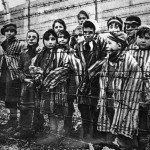 Many of the history books of today try to remove or minimize the Holocaust, and some people don’t even believe that it was real, but that couldn’t be further from the truth. The Holocaust took place between 1941 and 1945. In 1933, the Nazis came into power in Germany and they believed that the Germans were a superior race. They were completely against any people of different backgrounds…especially the Jewish people, who they felt were an inferior race, and were a danger to the German Racial Community. During the Holocaust, the Jewish people were systematicaly removed from their homes, made to be slaves, used for scientific experiments, and many died or were killed in the Gas Chambers.
Many of the history books of today try to remove or minimize the Holocaust, and some people don’t even believe that it was real, but that couldn’t be further from the truth. The Holocaust took place between 1941 and 1945. In 1933, the Nazis came into power in Germany and they believed that the Germans were a superior race. They were completely against any people of different backgrounds…especially the Jewish people, who they felt were an inferior race, and were a danger to the German Racial Community. During the Holocaust, the Jewish people were systematicaly removed from their homes, made to be slaves, used for scientific experiments, and many died or were killed in the Gas Chambers.
On this day in 1942, a stunning 4,300 Jews are deported from the Polish town of Chelm to the Nazi extermination camp at Sobibor, where all are gassed to death. Between 1942 and 1943, there were about 250,000 Jewish prisoners who lost their lives in the five gas chambers housed there. Then in October 1943, a 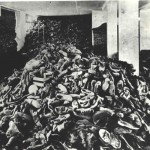 camp revolt occurred…300 Jewish slave laborers rose up and killed several members of the SS…Schutzstaffel (German translation: “Protective Echelon), as well as Ukrainian guards. The rebels were killed as the battled against the guards or tried to escape. The remaining prisoners were executed the very next day. I can’t even begin to imagine what incredible bravery it took to even make such an attempt. They had no weapons with which to engage in a battle. They were simply fighting for their lives, knowing that they would most likely lose. It was better to fight and die, than to live this way.
camp revolt occurred…300 Jewish slave laborers rose up and killed several members of the SS…Schutzstaffel (German translation: “Protective Echelon), as well as Ukrainian guards. The rebels were killed as the battled against the guards or tried to escape. The remaining prisoners were executed the very next day. I can’t even begin to imagine what incredible bravery it took to even make such an attempt. They had no weapons with which to engage in a battle. They were simply fighting for their lives, knowing that they would most likely lose. It was better to fight and die, than to live this way.
Also on this day, the German firm IG Farbe set up a factory just outside Aushwitz in order to take full advantage of the Jewish slave laborers from the Auschwitz concentration camps. IG Farben was a German chemical industry conglomerate. Its name is taken from Interessen-Gemeinschaft Farbenindustrie AktienGesellschaft which literally means “community of interests” of, in this case dye-making corporations. In addition to exploiting the Jewish slave labor for its oil and rubber production, IG Farben performed drug experiments on the slaves. Tens of  thousands of the slaves would lose their lives to the brutal work conditions and savage treatment received from the guards. In the aftermath, several of the firm’s officials would be convicted of plunder, spoilage of property, forced slave labor, and inhumane treatment of civilians and prisoners of war. The firm went under Allied control for the purpose of completely dismantling it, because it was a threat, but as resolve weakened, the firm was eventually divided into three companies, Hoechst…a chemical and pharmaceutical company, Bayer…a company we all know, and BASF…Badische Anilin und Soda Fabrik, also a chemical company. I suppose that one could say that in the end, some good came from these companies, but knowing their history tends to make it a little difficult to get past their origin, or their complete and total disregard for human life in the past.
thousands of the slaves would lose their lives to the brutal work conditions and savage treatment received from the guards. In the aftermath, several of the firm’s officials would be convicted of plunder, spoilage of property, forced slave labor, and inhumane treatment of civilians and prisoners of war. The firm went under Allied control for the purpose of completely dismantling it, because it was a threat, but as resolve weakened, the firm was eventually divided into three companies, Hoechst…a chemical and pharmaceutical company, Bayer…a company we all know, and BASF…Badische Anilin und Soda Fabrik, also a chemical company. I suppose that one could say that in the end, some good came from these companies, but knowing their history tends to make it a little difficult to get past their origin, or their complete and total disregard for human life in the past.
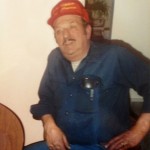 In the United States, you don’t often expect to become friends with a Russian man, but that is exactly what happened with my dad, Allen Spencer. Dad was working at WOTCO in Casper at the time, and his friend, Vladimir worked there as well. For Vladimir, the United States was the epitome of the word freedom. He loved the United States, and as an immigrant, who loved the United States, he wanted to learn the language. He was working very hard on it when he and my dad met. Dad was excited about Vladimir too. He had never known anyone from Russia, and really, never expected to. He told Mom and my younger sister, Allyn Hadlock that there was a Russian man working with him and he wanted to learn Russian so he could talk to him.
In the United States, you don’t often expect to become friends with a Russian man, but that is exactly what happened with my dad, Allen Spencer. Dad was working at WOTCO in Casper at the time, and his friend, Vladimir worked there as well. For Vladimir, the United States was the epitome of the word freedom. He loved the United States, and as an immigrant, who loved the United States, he wanted to learn the language. He was working very hard on it when he and my dad met. Dad was excited about Vladimir too. He had never known anyone from Russia, and really, never expected to. He told Mom and my younger sister, Allyn Hadlock that there was a Russian man working with him and he wanted to learn Russian so he could talk to him.
Dad bought a Russian/English dictionary, and began to study it. He had some specific phrases he wanted to learn, such as, Hello, How are you, Do you like America, and Do you have a family. Every night they sat down at the table to work through the dictionary, figuring out what he would say next. They also learned that certain symbols, 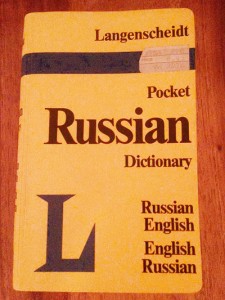 some that we use today, could mean something very different in Russian. The American symbol for “ok” is a good example. In Russian that symbol, with the circle of the thumb and forefinger, is a cuss word. It is very similar to flipping someone the bird. They laughed about that one. Then, when Dad wanted to say Dirty Rat, Allyn told him to use that American symbol for ok, because that should do it. That really got them laughing, and it still makes Allyn laugh to this day when she thinks about it.
some that we use today, could mean something very different in Russian. The American symbol for “ok” is a good example. In Russian that symbol, with the circle of the thumb and forefinger, is a cuss word. It is very similar to flipping someone the bird. They laughed about that one. Then, when Dad wanted to say Dirty Rat, Allyn told him to use that American symbol for ok, because that should do it. That really got them laughing, and it still makes Allyn laugh to this day when she thinks about it.
I think the thing that Vladimir liked so much about my dad was the fact that he tried to learn Russian, and that he reached out to a foreigner too. Vladimir and his wife didn’t have very many people that he could visit with…at least not in Russian. He was just so pleased that Dad was actually learning Russian. I’m not saying that Dad was fluent at Russian. In fact, his Russian could be considered comical at times, but the main thing was that he tried. Dad and Vladimir became the best of friends, and mom and Vladimir’s wife were friends too. They were invited to dinner at Vladimir’s house, and his wife made Borscht. Borscht is a beet soup. Now, I have to tell you that Dad must have really felt a friendship with Vladimir, because Dad hated beets, but he ate that soup. They told Mom and Dad that in Russia the people didn’t have very much meat, so their meals consisted of potatoes and vegetables. They were able to buy more meat now 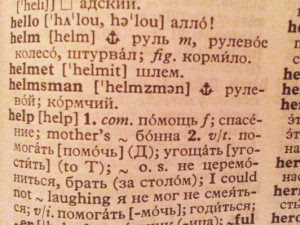 though, since coming to America, so when they had their American friends over for dinner, they bought meat for the Borscht…mostly because Americans are used to eating meat.
though, since coming to America, so when they had their American friends over for dinner, they bought meat for the Borscht…mostly because Americans are used to eating meat.
Vladimir and his wife wanted to be like the American people, because they loved this country. The did their very best to Americanize everything they did, because they wanted to be true Americans. This was the true melting pot…every foreigners dream, and they wanted to be a part of it. Dad and his Russian co-worker became good friends, and Vladimir always appreciated Dad’s efforts to make him feel at home in a new land.

![10592837_10203606798789446_4580093225917977156_n[1]](https://carynschulenberg.com/wp-content/uploads/2015/05/10592837_10203606798789446_4580093225917977156_n1-150x150.jpg) Last night, while my sister, Cheryl Masterson and I were going through several boxes of our parents paperwork to prepare it for shredding, we came across a number of letters from different family members. I was drawn to some from my dad’s brother, William Spencer. One letter was written on March 5, 1990, and told a lot about the small town of Holyoke, Minnesota, where the family lived for a number of years. Uncle Bill talked of how the town was just a skeleton now, and so unlike its former self. I could read the sadness in his thoughts. Holyoke was a place that, in his childhood, had seemed larger than life. He knew every inch of it. He and my dad, their sister, Ruth, and their friends had dodged the trains, played ball, gone to school, fished the stream, and…well, lived life there. Uncle Bill was sad, because now, all that was changing.
Last night, while my sister, Cheryl Masterson and I were going through several boxes of our parents paperwork to prepare it for shredding, we came across a number of letters from different family members. I was drawn to some from my dad’s brother, William Spencer. One letter was written on March 5, 1990, and told a lot about the small town of Holyoke, Minnesota, where the family lived for a number of years. Uncle Bill talked of how the town was just a skeleton now, and so unlike its former self. I could read the sadness in his thoughts. Holyoke was a place that, in his childhood, had seemed larger than life. He knew every inch of it. He and my dad, their sister, Ruth, and their friends had dodged the trains, played ball, gone to school, fished the stream, and…well, lived life there. Uncle Bill was sad, because now, all that was changing.
Uncle Bill wrote of the passing of this friend, and that friend, as well as all the citizens, teachers, parents, and business owners who had lived in the little town of Holyoke. While the passing of the people he knew and loved was hard enough, the loss of the different buildings in the town was equally devastating to my dear Uncle Bill. I think the building that was the hardest for him to see go was the little church, which held the baptismal font that had been built in 1935 by Fritz Fredrick, who is the father of my cousins Gene and Dennis Fredrick. Fritz also did most of the cabinet work, too. It was very hard for Uncle Bill to think of that baptismal font being left to rot, so he bought it and gave it to one of Fritz’s sons. Uncle Bill writes about how sad it makes him to see the buildings delapitated and, in his words, forlorn. Nevertheless, he continues to be drawn to Holyoke because it feels like going home to him. He loves the people there, and loves to spend time visiting with them. Holyoke is and always will be a part of him…like it’s in his DNA.
Uncle Bill’s letter continues to draw me back to it in much the same way that Holyoke draws Uncle Bill back to ![10342804_10203606793869323_3232942561128602595_n[1]](https://carynschulenberg.com/wp-content/uploads/2015/05/10342804_10203606793869323_3232942561128602595_n1-150x150.jpg)
![10624963_10203606795149355_518549074166794281_n[1]](https://carynschulenberg.com/wp-content/uploads/2015/05/10624963_10203606795149355_518549074166794281_n1-150x150.jpg) it, because even if the feelings are raw and painful to a degree, it is harder not to make the trip than it is the deal with the feelings when you go back there. My mom, Collene Spencer, my sister, Cheryl Masterson, my cousin Bill Spencer (Uncle Bill’s son), and I visited Holyoke this past August while we were back in Superior, Wisconsin, and I can completely understand how Uncle Bill feels about that place. I don’t recall having been there before, but like my Uncle Bill, Holyoke, Minnesota will continue to live in my heart. I guess that some places simply have that affect on you.
it, because even if the feelings are raw and painful to a degree, it is harder not to make the trip than it is the deal with the feelings when you go back there. My mom, Collene Spencer, my sister, Cheryl Masterson, my cousin Bill Spencer (Uncle Bill’s son), and I visited Holyoke this past August while we were back in Superior, Wisconsin, and I can completely understand how Uncle Bill feels about that place. I don’t recall having been there before, but like my Uncle Bill, Holyoke, Minnesota will continue to live in my heart. I guess that some places simply have that affect on you.
 When most of us think of a space station, we think of the International Space Station that exists today, but in reality, that is not the first space station that ever floated above our atmosphere. The first one was a small space station called Skylab 1, The idea of a space station and crew to live and work in space was one that was tossed around for years. It was finally realized and launched into space on May 14, 1973, but this was not to be a mission without any issues.
When most of us think of a space station, we think of the International Space Station that exists today, but in reality, that is not the first space station that ever floated above our atmosphere. The first one was a small space station called Skylab 1, The idea of a space station and crew to live and work in space was one that was tossed around for years. It was finally realized and launched into space on May 14, 1973, but this was not to be a mission without any issues.
Just 63 seconds into the launch, a meteoroid shield that was supposed to shelter Skylab accidentally opened. This put Skylab 1 at serious risk. Later the facility experienced communications problems with the antenna as a direct result of the launch incident. Nevertheless, as problems go, this was the least of the agency’s worries. “When the meteoroid shield ripped loose, it disturbed the mounting of workshop solar array wing No. 2 and caused it to partially deploy. The exhaust plume of the second stage retro-rockets impacted the partially deployed solar array and literally blew it into space,” NASA wrote.
NASA scrambled to stabilize the space station and take necessary measures to minimize the posibility of overheating, as well as, figuring out a way to handle its reduced power situation. The first crew, which was led by Apollo 12 commander Pete Conrad, would need to make the station habitable before they could get to work. The crew’s first job, which took place during the spacewalk, just hours after launch, was to deploy the solar array, but that didn’t work, because the metal strip holding it is place, refused to release. The crews continued to be frustrated with this and other operations problems, before finally managing to make the space station work relatively well.
Skylab spent six years orbiting Earth until its decaying orbit caused it to re-enter the atmosphere. It scattered debris over the Indian Ocean and sparsely settled areas of Western Australia. In all, three crews successfully lived on board the station for several months each. The last crew spent 84 days in orbit. This was an an American record that stood until the shuttle era.
I’m sure that, looking back on those years now, NASA must have felt like it had been living in the stone age. With the Space Shuttle and the International Space Station, going into space in earlier days was rather archaic. Of course, with the end of the Space Shuttle era, we don’t know what the face of space travel will be in the  future. Only time will tell. Nevertheless, in 1973, we were well ahead of the rest of the world with the first space station, no matter how archaic it was.
future. Only time will tell. Nevertheless, in 1973, we were well ahead of the rest of the world with the first space station, no matter how archaic it was.
Because of multiple problems experienced by Skylab 1, the space station’s orbit decayed faster than expected. This was mostly due to intense solar activity heating up Earth’s atmosphere. Soon, NASA knew that it was inevitable that the space station would come down. They adjusted the station as much as possible so it wouldn’t hit populated areas upon re-entering on July 11, 1979. A slight mathmatical error led to pieces falling in Australia, but fortunately nobody was hurt, and thankfully that was not the end of the space stations.
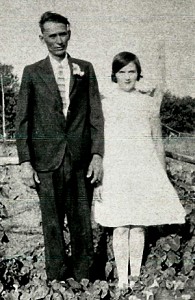 As a young man growing up in the West, my grandfather, George Byer learned a lot from his father, Cornealius Byer…especially when it came to getting along with the Indians in the area. Cornealius was very respected among the Indians, because he was honest with them, and spoke with integrity. He also taught his children to do the same. Because of that teaching, my grandfather was also much respected among the Indian tribes. This was probably a good thing for my grandmother, who was sixteen years younger than Grandpa, and beautiful too.
As a young man growing up in the West, my grandfather, George Byer learned a lot from his father, Cornealius Byer…especially when it came to getting along with the Indians in the area. Cornealius was very respected among the Indians, because he was honest with them, and spoke with integrity. He also taught his children to do the same. Because of that teaching, my grandfather was also much respected among the Indian tribes. This was probably a good thing for my grandmother, who was sixteen years younger than Grandpa, and beautiful too.
Grandma and Grandpa Byer were living on the Rosebud Sicangu Lakota Reservation, after they married. One day probably just a short time after their marriage, Grandma Hattie Byer noticed that a Lakota Sioux Indian chief was watching her…a lot. She mentioned this fact to Grandpa, who told her that Chief Thin Elk thought she was beautiful and had very nice legs. Now, as compliments go, this one was very nice, but I doubt if it did very much in the way of easing Grandma’s jitters about the whole situation. In fact, it most likely increased her anxiety substantially.
Grandma was eighteen years old when she and Grandpa married. Grandpa was thirty four. Having lived around the Indians all his life, he understood their ways, and he knew that there were good Indians and bad Indians, just as there are good and bad men in all walks of life. And Grandpa knew Chief Thin Elk. While Chief Thin Elk did appreciate a beautiful woman…with great legs, he would never have tried anything with Grandpa’s wife, because he respected Grandpa very much. I don’t know how he would have been with the wife of someone he didn’t respect, or any other woman for that matter, but with Grandma, he was respectful, even if he did like to watch her because she was beautiful.
I know that my Grandfather loved my Grandmother very much, and would never have let anyone hurt her, but I still have to wonder…if a small part of him thought the whole think was almost comical, or maybe even thought  that it was kind of nice to know that men thought his wife was beautiful. I don’t believe that my grandfather ever needed a trophy wife, but I think is is good for a guys ego to know that he has a beautiful wife, and to know that everyone thinks so.
that it was kind of nice to know that men thought his wife was beautiful. I don’t believe that my grandfather ever needed a trophy wife, but I think is is good for a guys ego to know that he has a beautiful wife, and to know that everyone thinks so.
For Grandma, however…well, she only had eyes for Grandpa, and I’m sure she thought it was a little bit forward of Chief Thin Elk to be saying such things. I have never heard of any trouble that ever came out of this situation, so I’m sure that while Chief Thin Elk thought Grandma was beautiful, and had nice legs, he always acted with the utmost respect around her, because she was the wife of his respected friend, and he would do nothing to jepordize that friendship, or shame his people in such an awful way.
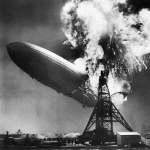 Through the years, or at least since the dawning of flight, man has tried to build flying machines that are more and more creative. Some of these have had amazing runs, like the B-17 Bomber, which was a World War II era plane, that still flies today. Others, like the Hindenburg, went down in a ball of flames. I don’t think it’s usually easy to predict which ones will succeed and which ones won’t. I seriously doubt that people would have predicted that the Concord would ever have the problems it had, or that the Goodyear Blimp would prove successful, where the Hindenburg failed. Sometimes, it’s all about finding yourself with just the right set of components, or making just one slight mistake…and sometimes, the mistake is more obvious.
Through the years, or at least since the dawning of flight, man has tried to build flying machines that are more and more creative. Some of these have had amazing runs, like the B-17 Bomber, which was a World War II era plane, that still flies today. Others, like the Hindenburg, went down in a ball of flames. I don’t think it’s usually easy to predict which ones will succeed and which ones won’t. I seriously doubt that people would have predicted that the Concord would ever have the problems it had, or that the Goodyear Blimp would prove successful, where the Hindenburg failed. Sometimes, it’s all about finding yourself with just the right set of components, or making just one slight mistake…and sometimes, the mistake is more obvious.
The Hindenburg disaster, which occurred on this day, May 6, 1937, was probably the worst slight mistake in history. The Hindenburg was Germany’s version of the most luxurious way to fly in existence at that time. It was over 800 feet long and with its state of the art Mercedes Benz engine, it flew at 85 miles per hour, and had a range of 8,000 miles. The Hindenburg carried 97 passengers, and made ten successful ocean crossings the year before the disaster. It was Germany’s Nazi government’s symbol of national pride, but it held a secret mistake that, on May 6, 1937, exploded into one of Germany’s biggest failures.
The Hindenburg was filled with seven million cubic feet of Hydrogen. The Germans used Hydrogen because of its maneuverability, even though Helium would have been much safer. The Hindenburg was supposed to arrive in New Jersey at 5:00am on that fateful day, but bad weather delayed its arrival until the later afternoon. Even then, the weather was not ideal. Rain further delayed the docking at Lakehurst. When they were finally cleared to dock, Captain Max Pruss brought the ship in too fast and had to order a reverse engine thrust. At 7:20pm a gas leak was noticed. Within minutes, the tail blew up, sending flames hundreds of feet in the air and as far down as the ground below.
The chain reaction that followed caused the entire vessel to burst into flames. There were nearly 1,000 spectators awaiting the arival, who could feel the heat of the fire from a mile away. Those on the Hindenburg 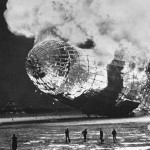 tried to jump. Some tried to jump to the docking cables, and when they fell, they were killed or critically injured. Others tried to jump as they got closer to the ground. Many were critically burned. In all 36 people lost their lives, while 56 managed to survive. Probably the main reason this crash has stayed in the minds of people over the years is that there were so many cameras to document the event. The photographs have become well known. Announcer Herbert Morrison, on WLS radio gave an unforgettably harrowing live account of the disaster, “Oh, oh, oh. It’s burst into flames. Get out of the way, please . . . this is terrible . . . it’s burning, bursting into flames, and is falling . . . Oh! This is one of the worst . . . it’s a terrific sight . . .oh, the humanity.” This truly was a disaster of monumental proportion, and it will never be forgotten.
tried to jump. Some tried to jump to the docking cables, and when they fell, they were killed or critically injured. Others tried to jump as they got closer to the ground. Many were critically burned. In all 36 people lost their lives, while 56 managed to survive. Probably the main reason this crash has stayed in the minds of people over the years is that there were so many cameras to document the event. The photographs have become well known. Announcer Herbert Morrison, on WLS radio gave an unforgettably harrowing live account of the disaster, “Oh, oh, oh. It’s burst into flames. Get out of the way, please . . . this is terrible . . . it’s burning, bursting into flames, and is falling . . . Oh! This is one of the worst . . . it’s a terrific sight . . .oh, the humanity.” This truly was a disaster of monumental proportion, and it will never be forgotten.
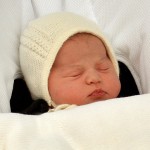 Something very new has happened to the royal family of England. As you all know by now, Prince William and his wife Catherine “Kate” now have a second baby…a girl named Charlotte Elizabeth Diana. In times prior, this child would have been passed over for succession to the throne, but this is a new time, and she is currently fourth in line to the throne. It used to be that if William and Kate were to have a third child, and it was a boy, he would pass up his sister in the line to the throne. That kind of left the girls as a showpiece really, so I think it is a great move to abolish that old tradition. And when we look at the years that Queen Elizabeth has ruled in the United Kingdom, I would have to say that she has done a pretty good job.
Something very new has happened to the royal family of England. As you all know by now, Prince William and his wife Catherine “Kate” now have a second baby…a girl named Charlotte Elizabeth Diana. In times prior, this child would have been passed over for succession to the throne, but this is a new time, and she is currently fourth in line to the throne. It used to be that if William and Kate were to have a third child, and it was a boy, he would pass up his sister in the line to the throne. That kind of left the girls as a showpiece really, so I think it is a great move to abolish that old tradition. And when we look at the years that Queen Elizabeth has ruled in the United Kingdom, I would have to say that she has done a pretty good job.
I am so excited that William and Kate had a baby girl this time, because they have been able to add a tribute to William’s mother, my 18th cousin, Princess Diana. I wish they had named this baby Diana for her first name, but I can certainly understand the reasons not to. As one person commented, this baby should have her own identity. Nevertheless, I think it is important that she have a tie to the grandmother she will never get to know…at least not in this life. I also think it would be wonderful if this baby bore a slight resemblance to Diana, who was quite beautiful.
Princess Charlotte Elizabeth Diana Windsor was born on May 2, 2015 at 8:34am, weighing 8 pounds 3 ounces, which was just 3 ounces less than her brother, Prince George when he arrived on July 22, 2013. Her name has several possibilities as to where it came from. Of course, the previous Princess Charlotte of Wales, was beloved by the people, but she died in childbirth in 1817 at the age of 21. Charlotte is the feminine form of Charles, and I suppose she could be named after Prince Charles. The name means petite. Charlotte is also Kate’s sister, Pippa’s middle name, so it is quite possible the name came from there, as the girls are very close. Of course, I’m sure that Elizabeth is after both Queen Elizabeth, and Kate herself, as her name is Catherine Elizabeth, and as we all know, Diana is after her grandmother, Princess Diana.
I’m sure this baby will feel a responsibility to be as loving as her grandmother was, and I think that is a good thing. Diana was the “People’s Princess” and I’m sure her granddaughter will be just as beloved as Diana was. While it will be a while before we see many more pictures, I look forward to watching this, my 18th cousin twice removed, grow into the beautiful princess that I’m sure she will become. Her parents have done a wonderful job raising her brother, Prince George, and I know they will do the same with her. I look forward to having the princess dazzle us in the very near future. Congratulations Will and Kate on your beautiful baby girl!!
 When my husband, Bob Schulenberg and I went to San Francisco for the first time, we wanted to make sure we saw all the sights of the area. I was especially interested in Alcatraz Prison, partly because of it’s unique location, but also because of its history. While visiting the prison, we had the opportunity to visit with an author, who had actually been an inmate at the prison. Jim Quillen recounted the years he spent at the prison, the corruption, abuse, and the Battle of Alcatraz, which took place from May 2, 1946 to May 4, 1946. The battle began with an unsuccessful escape attempt, and ended with the deaths of two guard, William A. Miller and Harold Stites, as well as three of the inmates. Eleven guards and one inmate were injured, and two convicts were later executed for their actions.
When my husband, Bob Schulenberg and I went to San Francisco for the first time, we wanted to make sure we saw all the sights of the area. I was especially interested in Alcatraz Prison, partly because of it’s unique location, but also because of its history. While visiting the prison, we had the opportunity to visit with an author, who had actually been an inmate at the prison. Jim Quillen recounted the years he spent at the prison, the corruption, abuse, and the Battle of Alcatraz, which took place from May 2, 1946 to May 4, 1946. The battle began with an unsuccessful escape attempt, and ended with the deaths of two guard, William A. Miller and Harold Stites, as well as three of the inmates. Eleven guards and one inmate were injured, and two convicts were later executed for their actions.
While most of the inmates and guards were in outside workshops, inmate Bernard Coy, a bank robber serving a 25 year sentence at Alcatraz, was in the main cellhouse sweeping the floor around C Block. Kitchen orderly Marvin Hubbard called on guard William Miller to let him in. He had just finished cleaning the kitchen. As Miller was frisking Hubbard for any stolen articles, Coy attacked him from behind and the two men overpowered the officer. They then released Joseph Cretzer and Clarence Carnes from their cells. They went to the gun gallery and obtained a rifle. As they attempted to make it down to the dock, hoping to catch the incoming boat, they quickly realized that was not going to work. Then, they decided to go back to prison and take some hostages.
At 10:00pm, unarmed guards went into the cellhouse. They were covered by armed guards in the two gun galleries overhead. They found the hostages, but one guard was wounded by a gunshot fired from the roof of one of the cell blocks. Then they locked the open door to D Block, and when the last officer reached safety, the 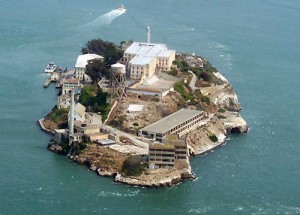 guards opened fire with a massive barrage from machine guns, mortars, and grenades on the prisoners within D Block. The prison authorities thought one of the armed convicts was holed up there, but they were wrong. They eventually figured out that the rebellious prisoners were confined to the main cellhouse and ceased their attack until further tactics were worked out. Jim Quillen told us that the men tried hiding behind their mattresses, or anything else they could think of, but it was really no protection at all. The battle lasted until May 6th. Alcatraz was the home to many of the most notorious prisoners, and many said it was filled with corruption and abuse from the guards. After a checkered past, it became a tourist attraction, and continues as such today.
guards opened fire with a massive barrage from machine guns, mortars, and grenades on the prisoners within D Block. The prison authorities thought one of the armed convicts was holed up there, but they were wrong. They eventually figured out that the rebellious prisoners were confined to the main cellhouse and ceased their attack until further tactics were worked out. Jim Quillen told us that the men tried hiding behind their mattresses, or anything else they could think of, but it was really no protection at all. The battle lasted until May 6th. Alcatraz was the home to many of the most notorious prisoners, and many said it was filled with corruption and abuse from the guards. After a checkered past, it became a tourist attraction, and continues as such today.
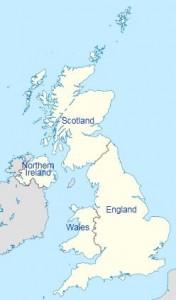 Many people may not be aware that in the United Kingdom of Great Britain, there is almost a constant state of confusion over just exactly who they are. They are considered Great Britain or the United Kingdom, but the United Kingdom takes in the countries of England, Scotland, Wales and Northern Ireland. It was on this day May 1, 1707 that England and Scotland joined together to become the United Kingdom. I think the union must have been a bit surprising, given that the English and the Scots had long battled over one thing or another. Nevertheless, The Scots needed the economic support that England could offer, while for England the merger was political. The Scots would no longer have a Parliment, but they were given instead a proportion of the seats at Westminster.
Many people may not be aware that in the United Kingdom of Great Britain, there is almost a constant state of confusion over just exactly who they are. They are considered Great Britain or the United Kingdom, but the United Kingdom takes in the countries of England, Scotland, Wales and Northern Ireland. It was on this day May 1, 1707 that England and Scotland joined together to become the United Kingdom. I think the union must have been a bit surprising, given that the English and the Scots had long battled over one thing or another. Nevertheless, The Scots needed the economic support that England could offer, while for England the merger was political. The Scots would no longer have a Parliment, but they were given instead a proportion of the seats at Westminster.
The English tend to call Great Britain, England, with notorious disregard for the feelings of the Welsh, with whom they joined in 1536 and the Scots, with whom they joined in 1707. The Act of Union of 1707, states merely that England and Scotland shall ‘be united into one kingdom by the name of Great Britain’. Many people simply lumped them together as Britain, calling all of them the Brits, which technically isn’t so…and even the English didn’t like that name. The last official merger was with Northern Ireland in 1800, at which time the enlarged kingdom became the United Kingdom of Great Britain.
It’s hard for me to think about being a country that is part of a kingdom, and yet, I suppose that is exactly what we were when the United States of America was part of England. Although we may not have been considered a part of a kingdom exactly, we were under British rule until the Revolutionary War. I suppose that there could be a love/hate relationship among the countries of the United Kingdom to this day. I do think that the British Royals do like to go to the different countries that are a part of the United Kingdom, and maybe 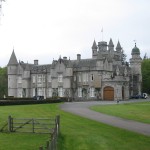
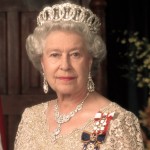 those countries like having them come for a visit now, but I have to wonder if that was always the case. Queen Elizabeth heads to her Scottish castle, Balmoral, at this time of the year, so she must love the whole Scottish countryside at least almost as much as she does England. For Queen Elizabeth, having a castle in Scotland is normal. I suppose that if you grew up being a part of a kingdom, it would be normal, and in all reality, while it wasn’t always a kingdom, it has been since 1536, so it might as well have been always…at least for the people who call the United Kingdom of Great Britain home.
those countries like having them come for a visit now, but I have to wonder if that was always the case. Queen Elizabeth heads to her Scottish castle, Balmoral, at this time of the year, so she must love the whole Scottish countryside at least almost as much as she does England. For Queen Elizabeth, having a castle in Scotland is normal. I suppose that if you grew up being a part of a kingdom, it would be normal, and in all reality, while it wasn’t always a kingdom, it has been since 1536, so it might as well have been always…at least for the people who call the United Kingdom of Great Britain home.

